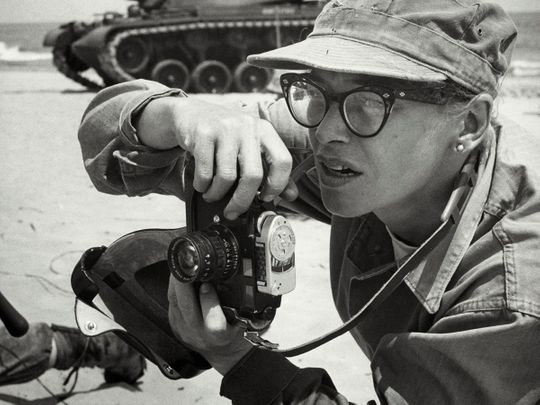
Women have been breaking records and blazing trails throughout history, around the world. Yet, they’re often a just footnote in the history books.
Click start to play today’s Spell It, where we shine a light on the achievements of some remarkable ‘women’ explorers in history.
Examples abound, of intelligent, diligent women working hard and producing results, only to be shunned by male colleagues and superiors. One such person was American geologist Marie Tharp, who offered evidence of the theory of tectonic plate shifts in the early 1950s. But, according to a February 2020 report in National Geographic, her colleague dismissed it as “girl talk”.
Here are three other women who made an enormous impact, in spite of the indifference towards their talent:
1. Women of the Bathysphere Expedition
For the first time ever, a new contraption called the bathysphere – a small steel orb – was lowered into the Atlantic Ocean. It was the first foray into deep-sea exploration, and while explorers William Beebe and Otis Barton were in the orb, a group of women scientists above the water were making sure the operation went without a hitch. Laboratory assistant Jocelyn Crane Griffin helped identify marine life, chief technical associate for the Wildlife Conservation Society Gloria Hollister Anable supported the mission by keeping a phone connection constantly open with Beebe, and artist Else Bostelmann transformed the explorers’ findings into dramatic paintings. Anable and Griffin took turns in the bathysphere, too, and Anable set a record for the greatest depth reached by a woman – at 1,208 feet.
2. Dickey Chapelle
As World War II raged on, American photographer Dickey Chapelle’s editor told her to make sure she was the first woman somewhere. She took his advice to heart, and sneaked ashore with a Marine unit during the Battle of Okinawa in Japan, in 1945. Women journalists were banned in combat zones at the time, and Chapelle temporarily lost her military press accreditation because of it, but she soldiered on. A pioneering war correspondent, she was held in solitary confinement during the Hungarian uprising, and was the only woman authorised to jump with combat paratroopers in Vietnam, after rigorous training with the Screaming Eagles, a light infantry division of the US Army specialising in air assault. She became so well known for covering news from the front lines that former president of Cuba, Fidel Castro, called her “the polite little American with all that tiger blood in her veins.” Towards the end of her career, Chapelle titled her autobiography ‘What’s a Woman Doing Here?’, in ode to the comments she often heard on the battlefield.
3. Jeanne Baret
When French Baret explorer Jeanne Baret stepped aboard the Etoile in 1766, she wasn’t setting out to become the first woman to circumnavigate the world. All she wanted was to look for plants. Her partner, Philibert Commerson, was a famous botanist at the time, and had been selected to be part of French explorer’s Louis Antoine de Bougainville’s expedition. He wanted Baret to be his assistant on the journey, but there was one problem – women were not allowed on French Navy ships. Baret solved this issue by disguising herself as a young man, and boldly offered her assistance at the docks, in full public view of the crew. Commerson ‘accepted’ her into his service, and the couple was able to keep their secret for a long time.
What do you think of these stories of women explorers? Play today’s Spell It and tell us at games@gulfnews.com.








